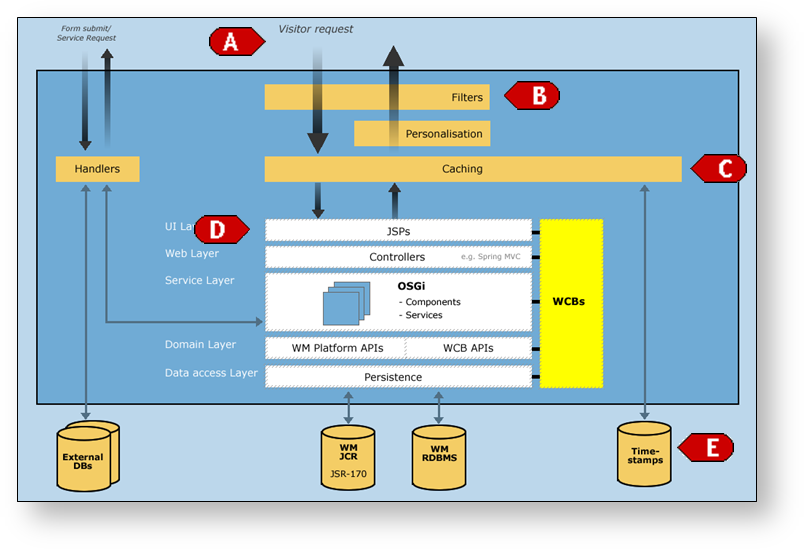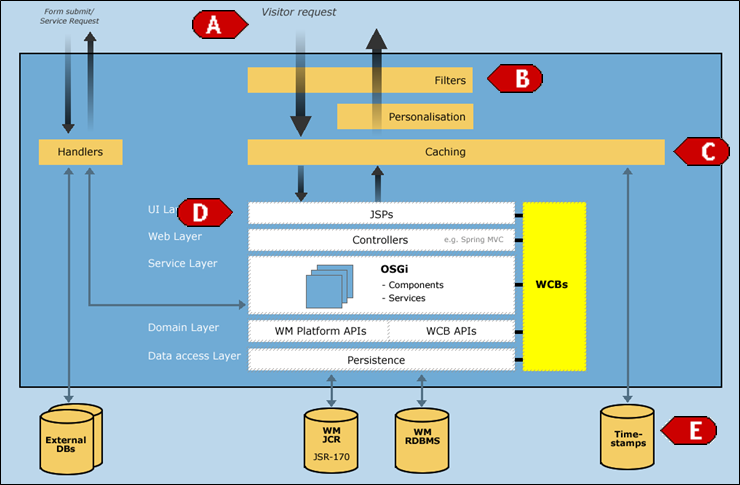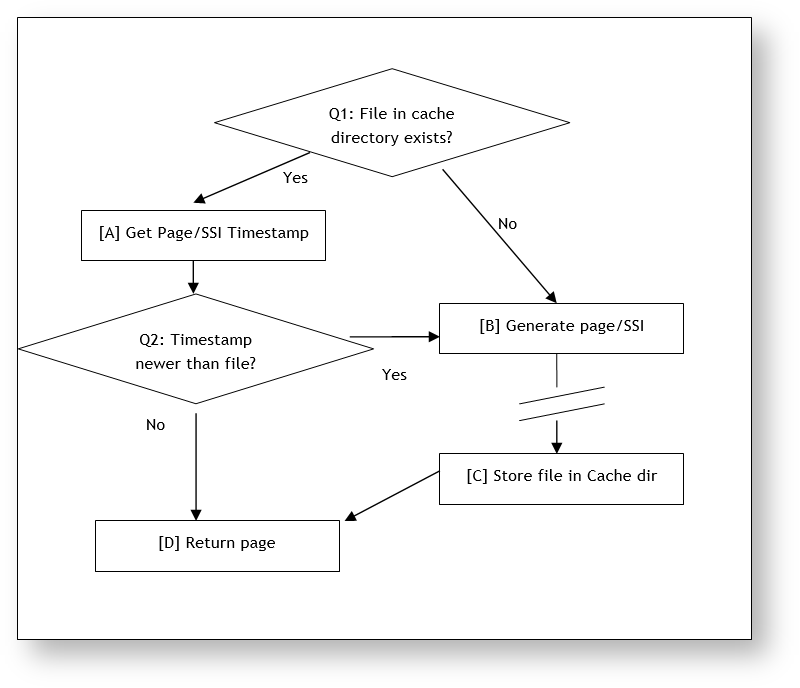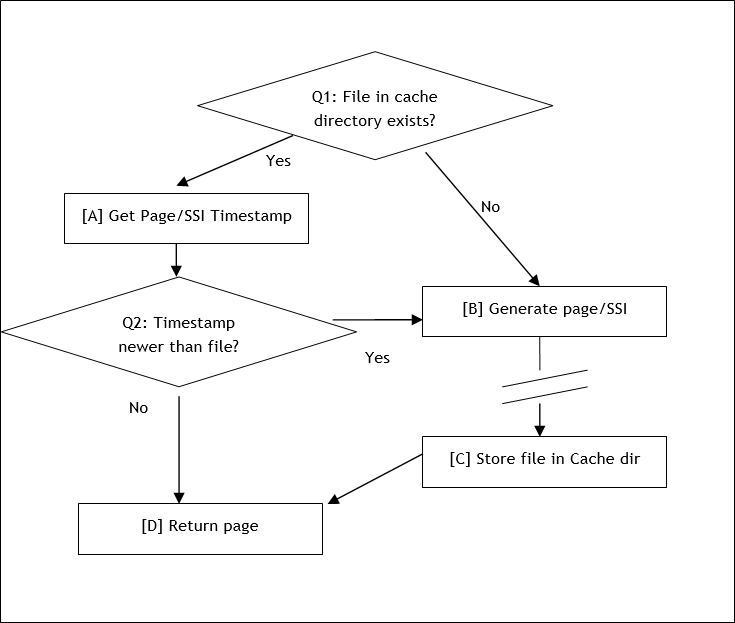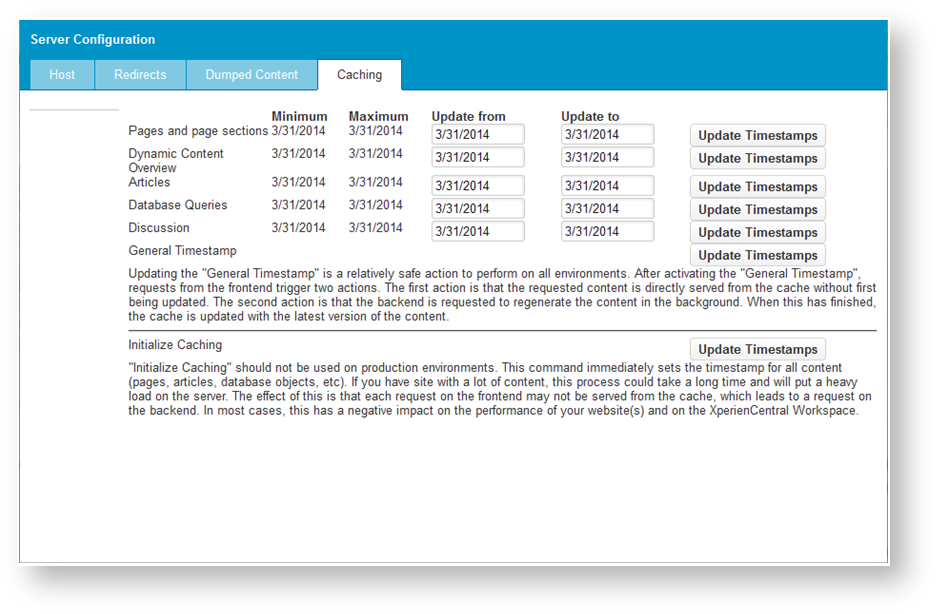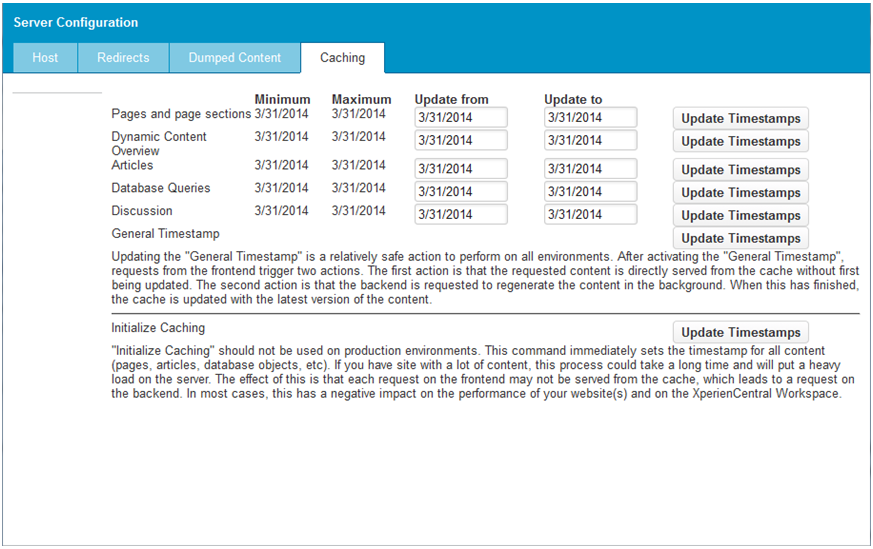...
Caching occurs in the frontend server processes and has links with JSP rendering [D] and the time stamps table [E], As you can see in the image below. A page request [A] from a website visitor goes through some filters [B] and arrives at the caching module [C].
The actions inside the caching module [C] can be summarized as follows (see image below):
...
- [A] Retrieve the timestamp of the page (or SSI) by performing a query on the Timestamp database. The database is not always queried but instead the timestamps are also cached in the caching module. The timestamp is compared with the date of the file in the cache. If the timestamp is newer then the file is returned [D], otherwise the page has to be rendered.
- [B] The page must be regenerated, therefore a request goes from the caching module to the backend servlet in order to render the page. This takes some time and it’s the slowest scenario. After the page has been rendered, it is stored as a file in the cache directory [C] and the page is returned.
...
Pages and Server Side Includes
...
To control the cache, navigate to Configure > Server configuration > [Caching]:
To update the timestamps, select a time range for the objects you want to update and click [Update timestamps]. This can be done for the various items, so use common sense to clear the cache only for the relevant items.
...
The content item will reload and you will see cached content outlined in red. If you hover the mouse over the area, the cache ID for the content will appear in a tooltip. For example:
...
A: The cache directory is set in the Setup Tool using cache_directory property . The default setting is /cache.in the frontend_system_settings section on the General tab of the Setup Tool.
Q: What happens if the (application) server is restarted? Will the cache be emptied?
...
Q: Is it OK to remove the files from the cache directory or can the cache get corruptcorrupted?
A: No. The proxy will detect whether the file is present on disk. If not it will be regenerated and written to disk again.
...
